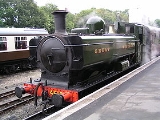
Bodmin and Wenford Railway
Encyclopedia
The Bodmin & Wenford Railway (BWR) is a heritage railway
, based at Bodmin
in Cornwall
, United Kingdom. It has an interchange with the national rail network
at Bodmin Parkway railway station
, the southern terminus of the line.
opened its branch line from Bodmin Road
to 27 May 1887, and on 3 September 1888 a junction line was opened to join with the Bodmin and Wadebridge Railway
at which had opened its line from to in 1834. The line closed on 3 October 1983 following the demise of freight traffic from Wenford.
In 1984 the Bodmin Railway Preservation Society was formed, and they held their first open day at Bodmin general two years later. 1987 saw the Cornish Steam locomotive Society move their equipment from Bugle
to Bodmin.
A Light Railway Order was granted in 1989 and the following year passenger services recommenced between Bodmin General and Bodmin Road, although by now that station had been renamed "Bodmin Parkway". A new intermediate station known as was brought into use. In 1996 the former junction line was also reopened, with another new station provided as .
. They are: (50.4662°N 4.7168°W) (50.4461°N 4.6627°W) (50.4740°N 4.7614°W) (50.4599°N 4.6745°W)
The route from Bodmin General to Bodmin Parkway is 3.5 miles (5.6 km) and Bodmin General to Boscarne Junction is 3 miles (4.8 km).
On leaving Bodmin parkway, the route first crosses the River Fowey
by a five-arch viaduct
, and then climbs up towards Bodmin Moor
. The one intermediate halt is at Colesloggett Halt, built by the BWR in 1993 to serve a Farm Park (now closed), and provides access to a network of footpaths through the Cardinham Woods
, belonging to the Forestry Commission
. The trip takes 25 minutes each way.
Upon reaching Bodmin General station, the headquarters of the railway, trains reverse to take the line to Boscarne Junction. This lies on the former London and South Western Railway
route to and , which now forms the Camel Trail
alongside the River Camel
. The railway has aspirations to extend alongside this foot/cyclepath towards Wadebridge in the future.

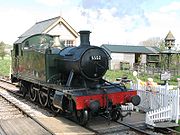
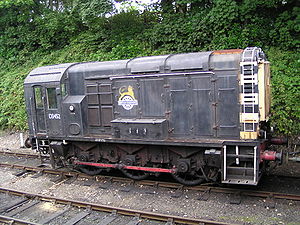
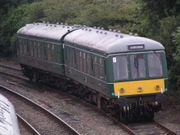
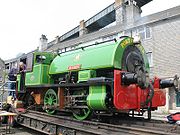
towards Wadebridge
alongside the Camel Trail
. Known as the RailTrail project, phase one would see the railway extended to Nanstallon Halt, phase two to Grogley Halt and phase three to Wadebridge Guineaport
.
A separate company (Bodmin & Wadebridge Railway Company) has been set up. It is responsible to the Directors of the Bodmin & Wenford Railway for the promotion and management of all aspects relating to the RailTrail project.
In areas where the width of the trackbed does not allow both a railway and a footpath side-by-side, short diversions are proposed. For example at Grogley, the Camel Trail could be re-routed along a former "headshunt", which was part of the original railway before it was replaced by a later deviation.
The RailTrail project is viewed by some as somewhat controversial due to the following concerns.
The decision of North Cornwall District Council to support the project was "a close fought battle", won only by the casting vote of Councillor Graham Facks-Martin.
Heritage railway
thumb|right|the Historical [[Khyber train safari|Khyber Railway]] goes through the [[Khyber Pass]], [[Pakistan]]A heritage railway , preserved railway , tourist railway , or tourist railroad is a railway that is run as a tourist attraction, in some cases by volunteers, and...
, based at Bodmin
Bodmin
Bodmin is a civil parish and major town in Cornwall, England, United Kingdom. It is situated in the centre of the county southwest of Bodmin Moor.The extent of the civil parish corresponds fairly closely to that of the town so is mostly urban in character...
in Cornwall
Cornwall
Cornwall is a unitary authority and ceremonial county of England, within the United Kingdom. It is bordered to the north and west by the Celtic Sea, to the south by the English Channel, and to the east by the county of Devon, over the River Tamar. Cornwall has a population of , and covers an area of...
, United Kingdom. It has an interchange with the national rail network
Network Rail
Network Rail is the government-created owner and operator of most of the rail infrastructure in Great Britain .; it is not responsible for railway infrastructure in Northern Ireland...
at Bodmin Parkway railway station
Bodmin Parkway railway station
Bodmin Parkway railway station is a station on the Cornish Main Line and serves the nearby town of Bodmin, Cornwall, United Kingdom. The station is west of , in the civil parish of St Winnow....
, the southern terminus of the line.
History
The Great Western RailwayGreat Western Railway
The Great Western Railway was a British railway company that linked London with the south-west and west of England and most of Wales. It was founded in 1833, received its enabling Act of Parliament in 1835 and ran its first trains in 1838...
opened its branch line from Bodmin Road
Bodmin Parkway railway station
Bodmin Parkway railway station is a station on the Cornish Main Line and serves the nearby town of Bodmin, Cornwall, United Kingdom. The station is west of , in the civil parish of St Winnow....
to 27 May 1887, and on 3 September 1888 a junction line was opened to join with the Bodmin and Wadebridge Railway
Bodmin and Wadebridge Railway
The Bodmin and Wadebridge Railway was a railway line opened in 1834 in Cornwall, United Kingdom. It linked the important town of Bodmin with the harbour at Wadebridge and also quarries at places such as Wenford...
at which had opened its line from to in 1834. The line closed on 3 October 1983 following the demise of freight traffic from Wenford.
In 1984 the Bodmin Railway Preservation Society was formed, and they held their first open day at Bodmin general two years later. 1987 saw the Cornish Steam locomotive Society move their equipment from Bugle
Bugle, Cornwall
Bugle is a village in central Cornwall, United Kingdom. It is in the parish of Treverbyn and is situated about five miles north of St Austell on the A391 road....
to Bodmin.
A Light Railway Order was granted in 1989 and the following year passenger services recommenced between Bodmin General and Bodmin Road, although by now that station had been renamed "Bodmin Parkway". A new intermediate station known as was brought into use. In 1996 the former junction line was also reopened, with another new station provided as .
Route
The stations served are all in or near BodminBodmin
Bodmin is a civil parish and major town in Cornwall, England, United Kingdom. It is situated in the centre of the county southwest of Bodmin Moor.The extent of the civil parish corresponds fairly closely to that of the town so is mostly urban in character...
. They are: (50.4662°N 4.7168°W) (50.4461°N 4.6627°W) (50.4740°N 4.7614°W) (50.4599°N 4.6745°W)
The route from Bodmin General to Bodmin Parkway is 3.5 miles (5.6 km) and Bodmin General to Boscarne Junction is 3 miles (4.8 km).
On leaving Bodmin parkway, the route first crosses the River Fowey
River Fowey
The River Fowey is a river in Cornwall, United Kingdom.It rises about north-west of Brown Willy on Bodmin Moor, passes Lanhydrock House, Restormel Castle and Lostwithiel, then broadens at Milltown before joining the English Channel at Fowey. It is only navigable by larger craft for the last ....
by a five-arch viaduct
Viaduct
A viaduct is a bridge composed of several small spans. The term viaduct is derived from the Latin via for road and ducere to lead something. However, the Ancient Romans did not use that term per se; it is a modern derivation from an analogy with aqueduct. Like the Roman aqueducts, many early...
, and then climbs up towards Bodmin Moor
Bodmin Moor
Bodmin Moor is a granite moorland in northeastern Cornwall, England, United Kingdom. It is in size, and originally dates from the Carboniferous period of geological history....
. The one intermediate halt is at Colesloggett Halt, built by the BWR in 1993 to serve a Farm Park (now closed), and provides access to a network of footpaths through the Cardinham Woods
Cardinham
Cardinham is a civil parish and a village in central Cornwall, United Kingdom. The village is situated approximately three-and-a-half miles , east-northeast of Bodmin....
, belonging to the Forestry Commission
Forestry Commission
The Forestry Commission is a non-ministerial government department responsible for forestry in Great Britain. Its mission is to protect and expand Britain's forests and woodlands and increase their value to society and the environment....
. The trip takes 25 minutes each way.
Upon reaching Bodmin General station, the headquarters of the railway, trains reverse to take the line to Boscarne Junction. This lies on the former London and South Western Railway
London and South Western Railway
The London and South Western Railway was a railway company in England from 1838 to 1922. Its network extended from London to Plymouth via Salisbury and Exeter, with branches to Ilfracombe and Padstow and via Southampton to Bournemouth and Weymouth. It also had many routes connecting towns in...
route to and , which now forms the Camel Trail
Camel Trail
The Camel Trail is a disused and resurfaced railway line in Cornwall, United Kingdom, that provides a recreational route for walkers, cyclists and horse riders...
alongside the River Camel
River Camel
The River Camel is a river in Cornwall, UK. It rises on the edge of Bodmin Moor and together with its tributaries drains a considerable part of North Cornwall. The river issues into the Celtic Sea area of the Atlantic Ocean between Stepper Point and Pentire Point having covered a distance of...
. The railway has aspirations to extend alongside this foot/cyclepath towards Wadebridge in the future.
Signalling
The entire railway is currently (as of 2011) operated by semaphore lower quadrant signals. This affords many operational advantages, including two-train running.Locomotives
Operational locomotives are shown in bold, but the situation changes from time to time so this list may not be up to date.Main line steam locomotives

- 4247 – a GWR 4200 ClassGWR 4200 ClassThe Great Western Railway 4200 Class is a class of 2-8-0T steam locomotives. They were designed for short-haul coal trips from coal mines to ports in South Wales. The principal role of the class was working the 1000+ ton coal trains up through the Welsh valleys. A job which needed much tractive...
2-8-0T heavy freight locomotive that used to haul trains of china clay from to . Following overhaul at the Flour Mill, 4247 is now running in at the Avon Valley RailwayAvon Valley RailwayThe Avon Valley Railway is a three-mile-long heritage railway based at Bitton station in South Gloucestershire, England, not far from Bristol and is run by a local group: The Avon Valley Railway Company Ltd. The railway follows the Avon Valley south-east from Oldland Common, through Bitton and...
prior to returning to Bodmin.
- 4612 – one of the familiar GWR 5700 ClassGWR 5700 ClassThe Great Western Railway 5700 Class is a class of 0-6-0 pannier tank steam locomotive, built between 1929 and 1950. 863 were built, making them the second most-produced British class of steam locomotive.- Overview :...
0-6-0PT pannier tank locomotives that operated out of St Blazey engine shedSt Blazey engine shedSt Blazey Engine Shed is located in Par, Cornwall, United Kingdom. The depot operator is DB Schenker. It is named after the adjacent village of St Blazey and has the depot code is BZ.-History:...
for use on the china clay branch lines. It now awaits overhaul, and it will go to the Flour Mill when 4247 comes back.
- 5552 – a GWR 4575 ClassGWR 4575 ClassThe Great Western Railway 4575 Class is a class of steam locomotive. They are 2-6-2T Small Prairie type based on the 4500 Class but with larger side tanks...
2-6-2T familiar from operating passenger trains on most of the Cornish branch lines. Its boiler certificate expires in 2013.
- 6435 – a GWR 6400 ClassGWR 6400 ClassThe Great Western Railway 6400 Class is a class of 0-6-0 pannier tank steam locomotive introduced by Charles Collett in 1932. All 40 examples were 'auto-fitted' – equipped with the remote-control equipment needed for working autotrains....
0-6-0PT, another pannier tank, this class was fitted with equipment for working auto trainsGWR AutocoachThe GWR Autocoach is a type of coach that was used by the Great Western Railway for push-pull trains powered by a steam locomotive. The distinguishing design feature of an autocoach is the driving cab at one end, allowing the driver to control the train without needing to be located in the cab of...
between and . 6435 emerged from Swindon railway works for the first time in April 1937 and spent many years in Wales. It was condemned on 12 October 1964 and entered preservation with the Dart Valley RailwaySouth Devon Railway TrustThe South Devon Railway Trust is a charitable organisation that operates a heritage railway from Totnes to Buckfastleigh in Devon, alongside the River Dart...
on 17 October 1965. Its boiler certificate expires in 2013.

- 30120 – one of the LSWR Class T9LSWR Class T9The London and South Western Railway T9 class was a class of 66 4-4-0 steam locomotive designed for express passenger work by Dugald Drummond and introduced to services on the LSWR in 1899...
"Greyhound" 4-4-04-4-0Under the Whyte notation for the classification of steam locomotives, 4-4-0 represents the wheel arrangement of four leading wheels on two axles , four powered and coupled driving wheels on two axles, and no trailing wheels...
s that pulled express trains from ExeterExeter Central railway stationExeter Central railway station is the most centrally located of the railway stations in Exeter, Devon, England. It is smaller than St Davids which is on the west side of the city but it is served by trains on the London Waterloo to Exeter main line, and is also by local services to , and . From...
to and . It is on long-term loan from the National Collection and has been overhauled during 2010 to allow it to re-enter service. Its boiler certificate expires in 2020. - 30587 – an LSWR 0298 ClassLSWR 0298 ClassThe London and South Western Railway 0298 Class or Beattie Well Tank is a class of British steam locomotive. They are 2-4-0WT well tanks, originally built between 1863 and 1875 for use on passenger services in the suburbs of London, but later used on rural services in South West England...
"Beattie Well Tank" 2-4-02-4-0Under the Whyte notation for the classification of steam locomotives, 2-4-0 represents the wheel arrangement of two leading wheels on one axle, four powered and coupled driving wheels on two axles, and no trailing wheels....
WT, one of three of these ancient locomotives that were used for many years on the mineral branch from to Wenfordbridge. It can be used occasionally on light passenger trains until 2012 when its boiler certificate will expire.
Main line diesel locomotives

- D3452 – a British Rail Class 10British Rail Class 10The British Rail Class 10 diesel locomotive was a variation on the Class 08 diesel-electric shunter in which a Blackstone diesel engine was fitted instead of one made by the English Electric company...
0-6-0 diesel-electricDiesel-electricDiesel-electric transmission or diesel-electric powertrain is used by a number of vehicle and ship types for providing locomotion.A diesel-electric transmission system includes a diesel engine connected to an electrical generator, creating electricity that powers electric traction motors...
(DE) shunting locomotive. After withdrawal by British Rail in July 1968, it was sold to English China Clays plcEnglish China Clays plcEnglish China Clays plc or ECC was a mining company involved in the extraction of china clay, based in St Austell, Cornwall. It was once a constituent of the FTSE 100 Index but in 1999 was acquired by Imetal.-History:...
for further service. It spent much of its subsequent time at FoweyFoweyFowey is a small town, civil parish and cargo port at the mouth of the River Fowey in south Cornwall, United Kingdom. According to the 2001 census it had a population of 2,273.-Early history:...
shunting china clay trains. It was bought for preservation in March 1989 and was put to work at Bodmin. - 08444 – a British Rail Class 08British Rail Class 08The British Rail Class 08 is a class of diesel-electric shunting locomotive. From 1953 to 1962, 996 locomotives were produced, making it the most numerous of all British locomotive classes....
0-6-0DE shunting locomotive. This was the first diesel to arrive on the Bodmin and Wenford Railway, delivered in March 1987 from Cardiff Canton TMDCardiff Canton TMDCardiff Canton TMD is a diesel locomotive Traction Maintenance Depot which is situated in Cardiff, Wales. The depot code is CF. In steam days the depot was known as Cardiff Canton and its shed code was 86C. Originally built as the main maintenance base for the South Wales Railway, it became the...
. It was originally number D3559 but later became 08444 which is the number it carries at Bodmin. - 33110 – a British Rail Class 33British Rail Class 33The British Rail Class 33 also known as the BRCW Type 3 or Crompton is a class of Bo-Bo diesel-electric locomotives ordered in 1957 and built for the Southern Region of British Railways between 1960 and 1962....
Type 3 Bo-BoBo-BoA Bo-Bo or Bo′Bo′ is a locomotive with two independent four-wheeled bogies with all axles powered by individual traction motors...
. This Southern RegionSouthern Region of British RailwaysThe Southern Region was a region of British Railways from 1948. The region ceased to be an operating unit in its own right in the 1980s and was wound up at the end of 1992. The region covered south London, southern England and the south coast, including the busy commuter belt areas of Kent, Sussex...
locomotive arrived at Bodmin in December 1993. It is currently operational. - 37142 – a British Rail Class 37British Rail Class 37The British Rail Class 37 is a diesel-electric locomotive. Also known as the English Electric Type 3, the Class was ordered as part of the British Rail modernisation plan....
type 3 Co-Co. During preparation on Saturday morning of the 2009 autumn diesel gala, 37142 was found to have contaminated oil. Early examination shows a sudden water leakage from at least two liners. The loco has been stopped pending repair. This will probably involve the replacement of all 12 cylinder liner seals. The opportunity will also be taken to carry out any necessary top end power unit work, as well as yet another change of oil and filters. - 47306 – BR Co-Co Class 47British Rail Class 47The British Rail Class 47, is a class of British railway diesel-electric locomotive that was developed in the 1960s by Brush Traction. A total of 512 Class 47s were built at Crewe Works and Brush's Falcon Works, Loughborough between 1962 and 1968, which made them the most numerous class of British...
named "The Sapper". It is currently operational. - 50042 – BR Co-Co Class 50British Rail Class 50The British Rail Class 50 is a diesel locomotive built from 1967-68 by English Electric at their Vulcan Foundry Works in Newton-le-Willows. Fifty of these locomotives were built to haul express passenger trains on the, then non-electrified, section of the West Coast Main Line between Crewe,...
named after the warship "Triumph"HMS TriumphTen ships of the Royal Navy have been named HMS Triumph. Another was planned, but renamed before being launched: was a 68-gun galleon built in 1561. She was rebuilt in 1596, and sold in 1618. was a 44-gun ship launched in 1623 and broken up in 1687. was a 90-gun second rate ship of the line...
, it was taken out of service from Laira TMDLaira TMDLaira TMD is a railway Traction Maintenance Depot situated in Plymouth, Devon, England. The depot is operated by First Great Western and is mainly concerned with the overhaul and daily servicing of their fleet of High Speed Trains and also the DMUs used on local services...
at PlymouthPlymouthPlymouth is a city and unitary authority area on the coast of Devon, England, about south-west of London. It is built between the mouths of the rivers Plym to the east and Tamar to the west, where they join Plymouth Sound...
in October 1990. Although it had only been overhauled three months earlier, its bogieBogieA bogie is a wheeled wagon or trolley. In mechanics terms, a bogie is a chassis or framework carrying wheels, attached to a vehicle. It can be fixed in place, as on a cargo truck, mounted on a swivel, as on a railway carriage/car or locomotive, or sprung as in the suspension of a caterpillar...
s were exchanged after withdrawal for one with worn out wheels and some parts stolen. It was restored sufficiently to move under its own power by November 1992 and was placed in service the following year. It is currently operational.


Diesel Multiple Units
- BR Class 108British Rail Class 108The British Rail Class 108 diesel multiple units were built by BR Derby from 1958 to 1961, with a final production quantity of 333 vehicles....
unit 50980+52054 and spare vehicle 51947
- These units were built by BR at DerbyDerbyDerby , is a city and unitary authority in the East Midlands region of England. It lies upon the banks of the River Derwent and is located in the south of the ceremonial county of Derbyshire. In the 2001 census, the population of the city was 233,700, whilst that of the Derby Urban Area was 229,407...
from 1958-61, and were one of the most numerous types of 1950s DMUs.
Former industrial locomotives
- Alfred – one of the two ex-Port of Par Bagnall 0-4-0STs, currently in service.
- Brian Brian is a 0-4-0 Ruston Hornsby shunter. Named after the late Brian Shadwick, the loco came to Bodmin General in early 2009 for a repaint and routine maintenance. The loco is stabled at Bodmin Parkway and is used as the Shed Pilot.
- Judy – the older of the two ex-Port of Par Bagnall 0-4-0STs, it was on display at a china clay museum for many years but was moved to Bodmin and entered service at Easter 2009 following a major overhaul.
- 19Bagnall 0-4-0ST No. 19No. 19 is an 0-4-0 saddle tank locomotive, built by W.G. Bagnall. It was the final steam locomotive to work in the HM Devonport Dockyard. It is currently owned by the Cornish Steam Locomotive Preservation Society. No. 19 was taken out of service in 1996 so its wheels tyres could be replaced and...
– a Bagnall 0-4-00-4-0Under the Whyte notation for the classification of steam locomotives, 0-4-0 represents one of the simplest possible types, that with two axles and four coupled wheels, all of which are driven...
ST. Although based at Bodmin, it is currently working at PontypoolPontypool and Blaenavon RailwayThe Pontypool and Blaenavon Railway is a volunteer-run heritage railway in South Wales, running trains between a halt platform opposite the Whistle Stop public house southwards to the town of Blaenavon via a two-platform station at the site of former colliery furnace.The line is the highest...
where it will remain until December 2011. - 2766 – a Hunslet Austerity 0-6-0STHunslet Austerity 0-6-0STThe Hunslet Engine Company Austerity 0-6-0ST is a steam locomotive designed for shunting. The class became the standard British shunting locomotive during the Second World War, and production continued until 1964 at various locomotive manufacturers....
which is currently undergoing restoration. - 3121 – a Bagnall 0-4-0F. This is currently inoperable but may be restored in the future. Being a fireless locomotiveFireless locomotiveA fireless locomotive is a type of locomotive designed for use under conditions restricted by either the presence of flammable material or the need for cleanliness...
it only has a steam reservoir and not a boiler, so it will need an external boiler to charge it should it ever move under its own power.
RailTrail Project
The railway company is currently planning to extend beyond its western terminus at Boscarne JunctionBoscarne Junction railway station
Boscarne Junction railway station is a railway station on the Bodmin and Wenford Railway in Cornwall, United Kingdom, and is its current terminus of the railway although it has been projected that an extension to Wadebridge will be constructed...
towards Wadebridge
Wadebridge
Wadebridge is a civil parish and town in north Cornwall, England, United Kingdom. The town straddles the River Camel five miles upstream from Padstow....
alongside the Camel Trail
Camel Trail
The Camel Trail is a disused and resurfaced railway line in Cornwall, United Kingdom, that provides a recreational route for walkers, cyclists and horse riders...
. Known as the RailTrail project, phase one would see the railway extended to Nanstallon Halt, phase two to Grogley Halt and phase three to Wadebridge Guineaport
Wadebridge railway station
Wadebridge railway station was on the Bodmin and Wadebridge Railway. It opened in 1834 to transport goods between the market town of Wadebridge, the limit of navigation on the River Camel, and inland farming and mining areas...
.
A separate company (Bodmin & Wadebridge Railway Company) has been set up. It is responsible to the Directors of the Bodmin & Wenford Railway for the promotion and management of all aspects relating to the RailTrail project.
In areas where the width of the trackbed does not allow both a railway and a footpath side-by-side, short diversions are proposed. For example at Grogley, the Camel Trail could be re-routed along a former "headshunt", which was part of the original railway before it was replaced by a later deviation.
The RailTrail project is viewed by some as somewhat controversial due to the following concerns.
- SustransSustransSustrans is a British charity to promote sustainable transport. The charity is currently working on a number of practical projects to encourage people to walk, cycle and use public transport, to give people the choice of "travelling in ways that benefit their health and the environment"...
and the cycling/running/walking/equestrian communities have objected to these plans for the RailTrail project, claiming they do not provide significant evidence that a wide-enough multi-purpose trail can be provided. They consider the Camel Trail is currently too narrow at the Boscarne junction terminus due to the railway. - Some environmentalists have expressed concerns about the impact that the RailTrail project would have on the SSSI and SACSpecial Area of ConservationA Special Area of Conservation is defined in the European Union's Habitats Directive , also known as the Directive on the Conservation of Natural Habitats and of Wild Fauna and Flora...
of the Camel valley. - People living in the Guineaport area of Wadebridge have expressed concerns about having a rail terminus situated there, in the belief that space for a platform and car parking is inadequate.
The decision of North Cornwall District Council to support the project was "a close fought battle", won only by the casting vote of Councillor Graham Facks-Martin.

